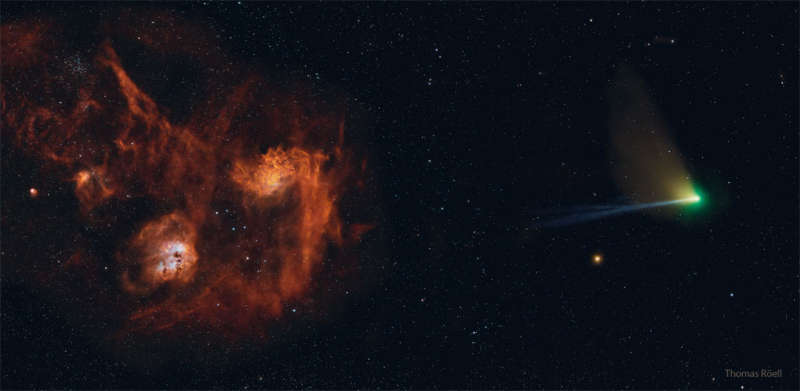
|
Credit & Copyright: Thomas R÷ell
Explanation:
Is star AE Aurigae on fire? No.
Even though
AE Aurigae is named the Flaming Star and the surrounding nebula
IC 405 is named the
Flaming Star Nebula, and even though the nebula appears to some like a swirling
flame, there is
no
fire.
Fire,
typically defined as the rapid molecular acquisition of
oxygen,
happens only when sufficient oxygen is present and is
not important in such high-energy, low-oxygen environments such as stars.
The bright star
AE Aurigae occurs near the center of the Flaming Star Nebula and is
so hot it glows blue,
emitting light so energetic it knocks
electrons away from surrounding gas.
When a proton
recaptures an electron, light is emitted, as seen in the surrounding
emission nebula.
Captured here three weeks ago, the
Flaming Star Nebula
is visible near the composite image's center,
between the red
Tadpole Nebula on the left
and blue-tailed
Comet ZTF on the right.
The Flaming Star Nebula lies about 1,500
light years distant, spans about 5
light years,
and is visible with a small telescope toward the
constellation of
the Charioteer (Auriga).
|
January February March April May June July August September October November December |
| ||||||||||||||||||||||||||||||||||||||||||||||||
NASA Web Site Statements, Warnings, and Disclaimers
NASA Official: Jay Norris. Specific rights apply.
A service of: LHEA at NASA / GSFC
& Michigan Tech. U.
Based on Astronomy Picture
Of the Day
